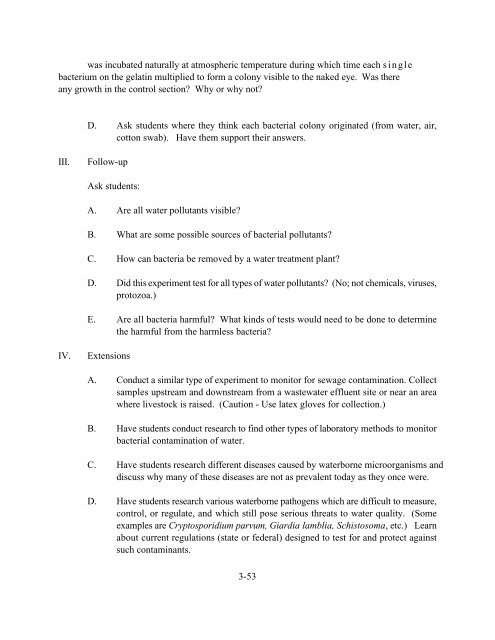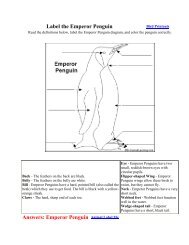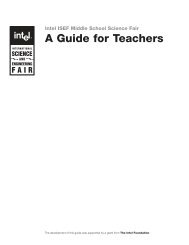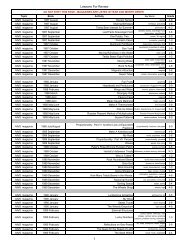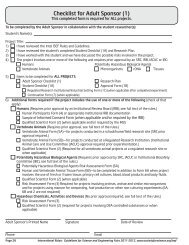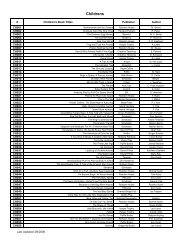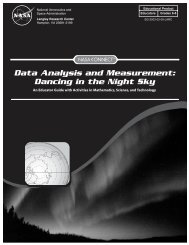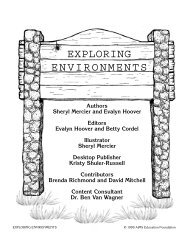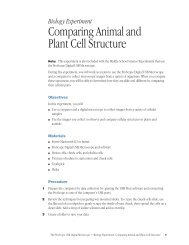BIOGRAPHY OF A RIVER
BIOGRAPHY OF A RIVER
BIOGRAPHY OF A RIVER
You also want an ePaper? Increase the reach of your titles
YUMPU automatically turns print PDFs into web optimized ePapers that Google loves.
was incubated naturally at atmospheric temperature during which time each singlebacterium on the gelatin multiplied to form a colony visible to the naked eye. Was thereany growth in the control section? Why or why not?D. Ask students where they think each bacterial colony originated (from water, air,cotton swab). Have them support their answers.III.Follow-upAsk students:A. Are all water pollutants visible?B. What are some possible sources of bacterial pollutants?C. How can bacteria be removed by a water treatment plant?D. Did this experiment test for all types of water pollutants? (No; not chemicals, viruses,protozoa.)E. Are all bacteria harmful? What kinds of tests would need to be done to determinethe harmful from the harmless bacteria?IV.ExtensionsA. Conduct a similar type of experiment to monitor for sewage contamination. Collectsamples upstream and downstream from a wastewater effluent site or near an areawhere livestock is raised. (Caution - Use latex gloves for collection.)B. Have students conduct research to find other types of laboratory methods to monitorbacterial contamination of water.C. Have students research different diseases caused by waterborne microorganisms anddiscuss why many of these diseases are not as prevalent today as they once were.D. Have students research various waterborne pathogens which are difficult to measure,control, or regulate, and which still pose serious threats to water quality. (Someexamples are Cryptosporidium parvum, Giardia lamblia, Schistosoma, etc.) Learnabout current regulations (state or federal) designed to test for and protect againstsuch contaminants.3-53


